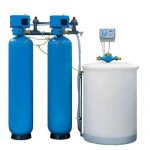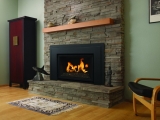Electrical engineering is a precise science that follows rigid fixed rules. Therefore, I am often surprised at how “flexible” electrical engineers can become when talking about the application of their science.
Shades Of Meaning
Take Welding Cable for example; are you actually welding cable? Some will tell you that this refers to a technique known as ultrasonic welding used in the automotive industry for Welding Cable trees (which has nothing whatsoever to do with cabling trees of growing wood). Line maintenance men at Bell Canada can still tell you that Welding Cable refers to their practice of using ooxyacetylene welding for cable splicing (to be fair, this is more akin to soldering and brazing than to true welding).
I suppose the ends of some very large diameter electrical wires could be welded together but it is more likely that Welding Cable should refer to the wiring cables used in any method of electric arc welding.
Welding By Electric Arc
Welding is an engineering technique for joining materials together – usually metals. Again, the basic form of arc welding can be known by a variety of different names. Essentially it is manual metal arc welding whereby electrical current is passed into an electrode known as a welding rod. As the electrode nears the metal parts to be joined, an arc sparks across and deposits the electrode metal into the gap between the parts to be joined. The electrode also contains something known as “flux” which improves the integrity of the welded joint by protecting it from atmospheric conditions while still in the molten metal state. This is also known as “stick welding”.
Obviously, it takes power to make metal in the electrode melt and jump onto the metal being welded. As the name implies, electricity supplies this power and has to be passed into the electrode/rod. Normally there will be a welding power supply unit which converts the available” mains” supply into a supply suitable for the welding job in hand. This can be either alternating or direct current. A cable connects to a clamp that holds the electrode and carries the current to the electrode. The current returns to ground though cable attached to part of the metal being welded. Custom Welding Cable provides these connections which are often referred to as welding leads.
Different metals have different power requirements from the Welding Cable as do the more sophisticated welding sets such as used for TIG (tungsten inert gas) or MIG (metal inert gas) welding. Arc welding equipment usually comes with its own cabling but, often from rough handling, replacement is frequently necessary and you should ensure that you only use the Welding Cable that is rated for your particular arc welding equipment.






